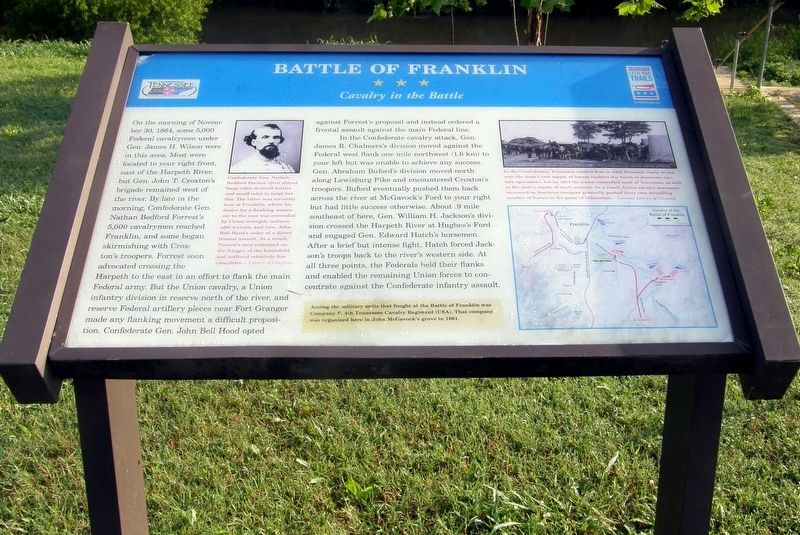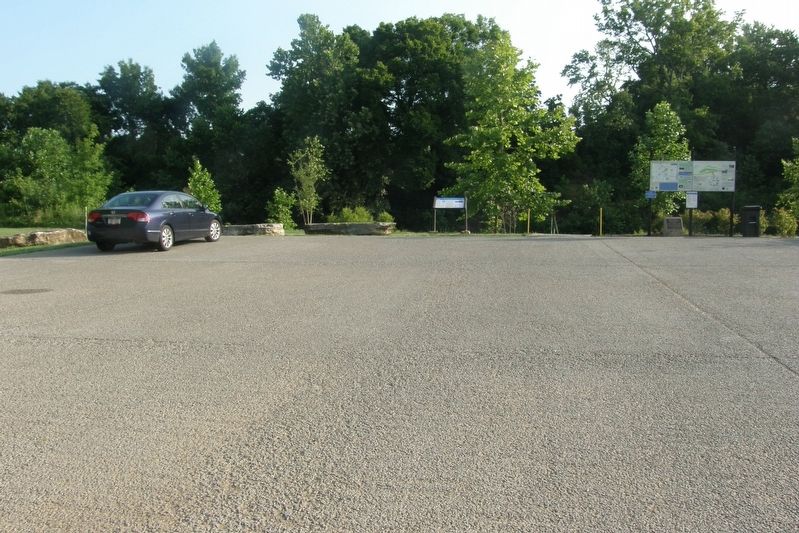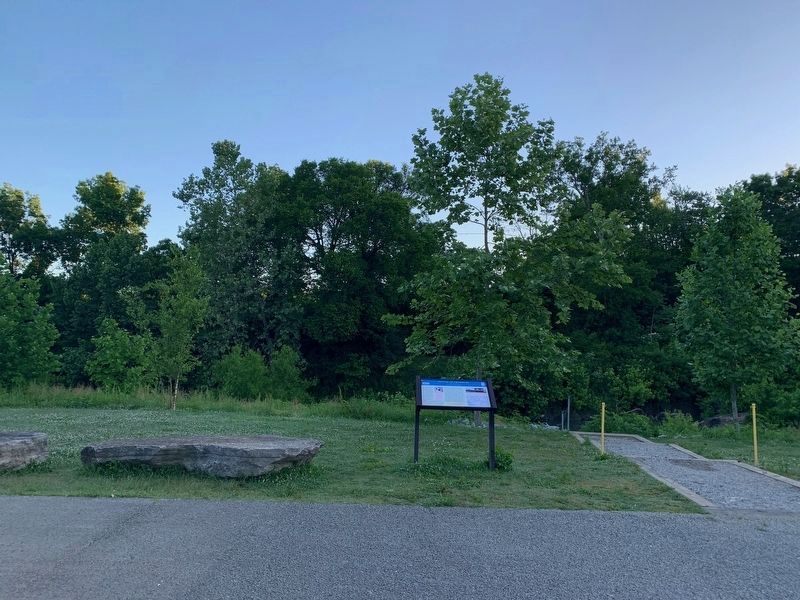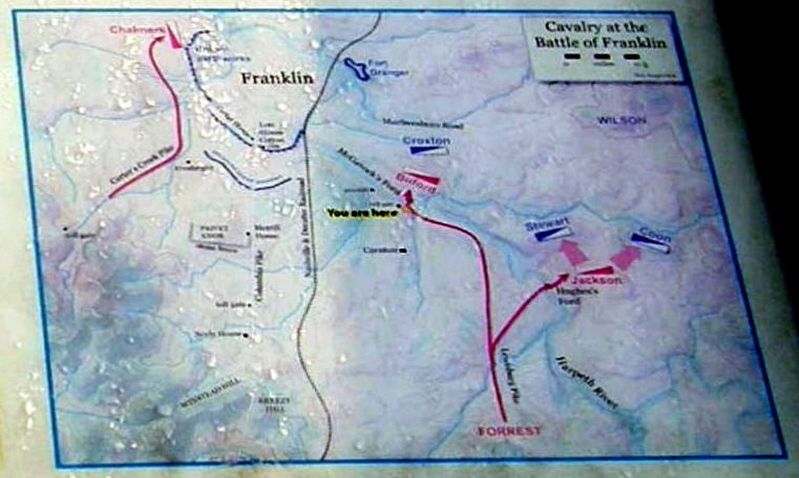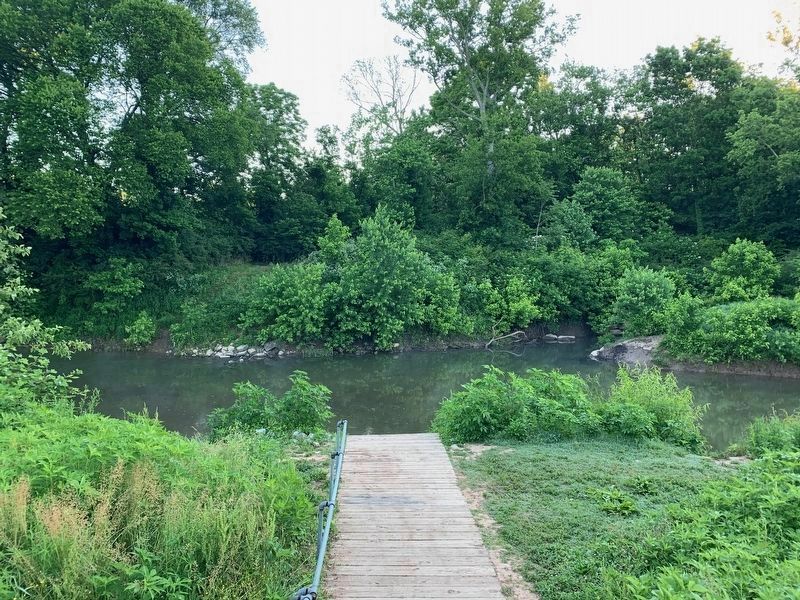Franklin in Williamson County, Tennessee — The American South (East South Central)
The Battle of Franklin
Cavalry in the Battle
In the Confederate cavalry attack, Gen. James R. Chalmers’s division moved against the Federal west flank one mile northwest (1.6km) to your left but was unable to achieve any success. Gen. Abraham Buford’s division moved north along Lewisburg Pike and encountered Croxton’s troopers. Buford eventually pushed them back across the river at McGavock’s Ford to your right but had little success otherwise. About .9 miles southeast of here, Gen. William H. Jackson’s division crossed the Harpeth River at Hughes’s Ford and engaged Gen. Edward Hatch’s horsemen. After a brief but intense fight, Hatch forced Jackson’s troops back to the river’s western side. At all three points, the Federals held their flanks and enabled the remaining Union forces to concentrate against the Confederate infantry assault.
(sidebar)
Among the military units that fought at the battle of Franklin was Company F, 4th Tennessee Cavalry Regiment (CSA). That company was organized here in John McGavock’s grove in 1861.
Erected by Tennessee Civil War Trails.
Topics and series. This historical marker is listed in this topic list: War, US Civil. In addition, it is included in the Tennessee Civil War Trails series list. A significant historical date for this entry is November 30, 1864.
Location. 35° 54.55′ N, 86° 51.355′ W. Marker is in Franklin, Tennessee, in Williamson County. Marker is on Lewisburg Pike (Business U.S. 431) west of Carriage Park Drive, on the right when traveling west. Touch for map. Marker is in this post office area: Franklin TN 37064, United States of America. Touch for directions.
Other nearby markers. At least 8 other markers are within walking distance of this marker. Harpeth River Restoration and Fish Passage (here, next to this marker); Battle of Franklin, Eastern Flank (about 500 feet away, measured in a direct line); Advancing With Scott's Brigade (about 500 feet away); a different marker also named Advancing With Scott's Brigade
(approx. 0.2 miles away); Eastern Flank Battlefield Park (approx. 0.2 miles away); a different marker also named Battle of Franklin, Eastern Flank (approx. Ľ mile away); a different marker also named Advancing With Scott's Brigade (approx. Ľ mile away); a different marker also named Battle of Franklin, Eastern Flank (approx. Ľ mile away). Touch for a list and map of all markers in Franklin.
Related marker. Click here for another marker that is related to this marker. "Recruiting for War" wayside on the Eastern Flank Battlefield
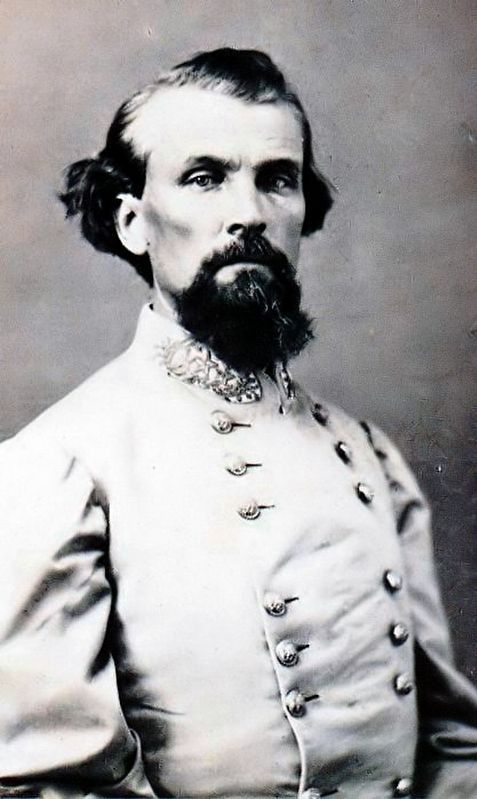
May 1, 2020
5. Nathan Bedford Forrest
Confederate Gen. Nathan Bedford Forrest often played large roles in small battles and small roles in large battles. The latter was certainly true at Franklin, where his desire for a flanking maneuver to the east was overruled by Union strength, unfavorable terrain, and Gen. John Bell Hood’s order of a direct frontal assault. As a result, Forrest’s men remained on the fringes of the battlefield and suffered relatively few casualties. - Library of Congress

Photographed By Larry Gertner, June 21, 2019
7. Inset
In the Confederacy, Tennessee ranked first in total livestock. Early in the war, the state's vast supply of horses enabled the South to dominate cavalry operations, but by 1864 the Union controlled most of Tennessee as well as the state's supply of draft animals. As a result, Union cavalry successes increased as Southern troopers gradually pushed their own dwindling number of horses to the point of exhaustion. - Courtesy Library of Congress
Credits. This page was last revised on June 1, 2020. It was originally submitted on August 28, 2019, by Larry Gertner of New York, New York. This page has been viewed 556 times since then and 70 times this year. Last updated on August 28, 2019, by Larry Gertner of New York, New York. Photos: 1, 2. submitted on August 28, 2019, by Larry Gertner of New York, New York. 3. submitted on June 1, 2020. 4. submitted on August 28, 2019, by Larry Gertner of New York, New York. 5, 6. submitted on June 1, 2020. 7. submitted on August 28, 2019, by Larry Gertner of New York, New York. • Bernard Fisher was the editor who published this page.
